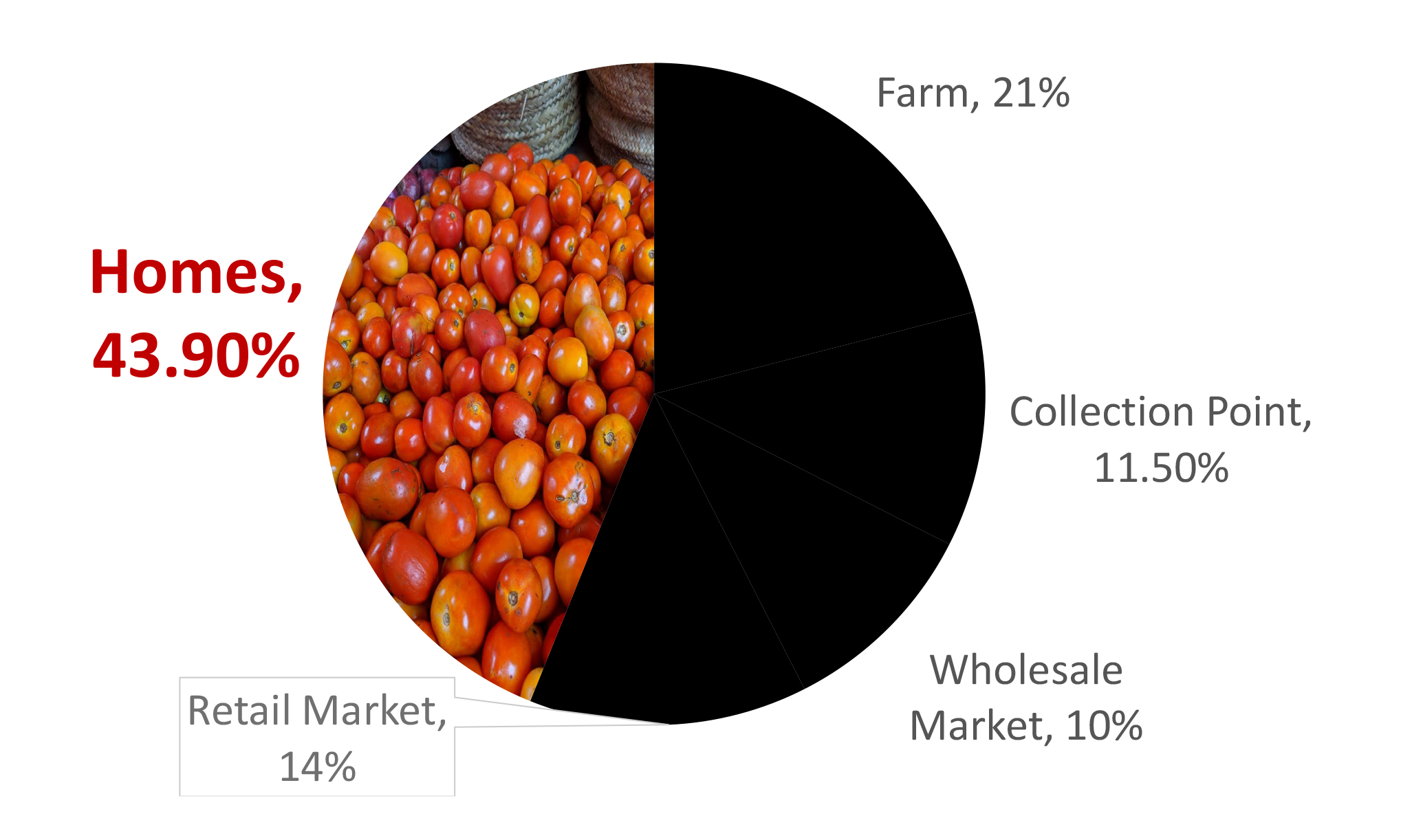A panel focused on postharvest strategies brought together professionals for a powerful discussion about innovative ways to reduce food loss while promoting economic development during the Horticulture Research for Development Conference, "Colorful Harvest: From Feeding to Nourishing a Growing World," held March 27, 2019 in Washington, D.C.
The panel was moderated by Amanda Brondy, Director of International Projects for the World Food Logistics Organization. Panel speakers included:
- Rashmi Ekka, Project Manager of Postharvest Programs for Agribusiness Associates
- Rachael Cox, CEO and Co-Founder of EarthEmpower
- Conor Riggs, of iDE
Amanda Brondy: Opportunities in postharvest
Amanda Brondy, of the World Food Logistics Organization, provided an introductory presentation for the panel and discussed how cold chain interventions can be smart business investments.
According to the United Nations Food and Agriculture Organization, 95 percent of agricultural research investments in Sub-Saharan Africa over the course of the past 30 years have been directed at increasing productivity while only 5 percent of investments have targeted reducing food losses (more recent analysis has shown some increase in postharvest research and development, up to 15 percent). Losses for horticulture crops typically range from 30-50 percent and are often the consequence of poor quality containers, rough handling and a lack of temperature management.
As a result, a comprehensive effort must be made to build a functioning postharvest system with a comprehensive approach to technology, training and continued support through long-term relationships. One of the technologies she discussed was the CoolBot and also the Mobile CoolBot Trailer for storage and transportation. Postharvest support also includes hands-on training and access to tools, materials, equipment, and supplies such as plastic crates, systems for cleaning and reuse.
Brondy included these recommendations for moving forward successfuly with postharvest development:
- Pair technology with training
- Build relationships
- Demonstrate the business case for technological interventions
- Seek to demonstrate the value when training and materials are delivered for free
- Limit the duration of “free” interventions
- Beware of bypassing foundational best practices
Rashmi Ekka: Experience from Rwanda and Burkina Faso
Rashmi Ekka of Agribusiness Associates provided insights from her experience managing Horticulture Innovation Lab projects in Rwanda and Burkina Faso focused on reducing postharvest losses.
She delved into an example of postharvest loss analysis from Rwanda, following the tomato value chain to identify losses. As tomatoes journey from farm to table, 21 percent are lost at the farm level, then 11.5 percent lost at the collection point, then 10 percent lost at the wholesale market, 14 percent lost at the retail market. In the end, the remaining 43.9 percent of tomatoes end up in the hands of consumers.

Strategies to successfully introduce improved postharvest practices include framing postharvest interventions within the market system, involving different types of in-country partners, building farmer capacity with "hand holding" in the field, creating partnerships with early adopters, catalyzing entrepreneurship, and deliver results to stakeholders that are valued.
Rachael Cox: Earth Empower, powerful food cultivated by empowered people
Rachael Cox provided an introduction to her social enterprise, EarthEmpower, which fosters social empowerment and economic growth among women from rural communities in Mexico and Guatemala by aggregating and processing native, rare and superfood crops, and connecting farmers to high-value markets. More specifically, Earth Empower works to provide well paid jobs for women, increase incomes for farmers in value chains, and advance empowerment among the women and farmers, which it defines as the "ability to set goals, understand rights, and pursue goals and rights."
The natural and organic food and beverage industry is a $320 billion industry, nutraceuticals represent an $578 billion industry, and natural beauty products make up a $22 billion industry.
Earth Empower works with farmer groups who grow over 30 crops, processing including dry chain technologies, and market connections for processed specialty ingredients. The company's next steps are to make further investments in farmer-led value-added processes, traceable market technologies and export to international markets.
Conor Riggs: Scale through structure with iDE
Conor Riggs of iDE gave a business-focused presntation that discussed current scaling strategies used by iDE, where it sees itself as playing the role of an "honest broker" market intermediary to de-risk pathways for postharvest management and postharvest investments.
He discussed how iDE has gone from seeing itself as the "Do It All" NGO, with historic programming in postharvest management as a market intermediary, and evolving its role to instead provide targeted, structural de-risking of the "missing middle." The organization has identified the missing middle as a link between rural, informal markets and urban, formal markets that reduces risk and provides service.
Instead iDE is evolving its role into what it calls the "Honest Broker" that provides targeted, structural de-risking of that missing middle. He shared various ways that iDE focused on assessing for scale through its Anukulan project in Nepal and adapting toward scale to find commercial pockets.
He pointed out that overcoming scaling challenges in postharvest management (PHM) requires a combination of specialized roles. He explained that iDE sees postharvest management as a challenge area that they can best contribute to by focusing on generating better market governance linkages through more considered and resilient market infrastructure. This new market infrastructure can more quickly achieve scale impacts through private sector investment that is more: de-risked, accelerated through focus, and symmetric and equitable with clearly framed expectations.
